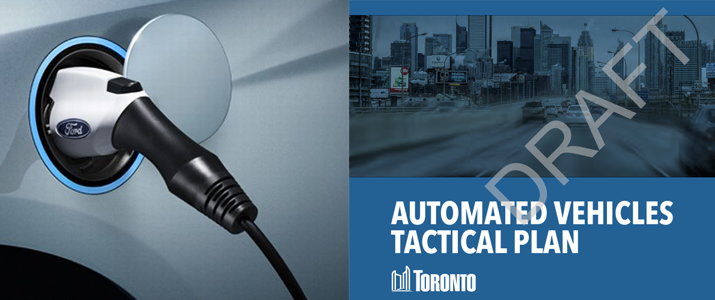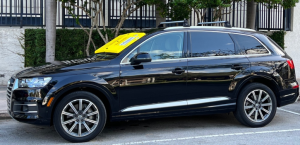Tactically Toronto
On Oct. 17, city staff presented the Automated Vehicles Tactical Plan for the City of Toronto, which outlines tests and other research plans the city aims to pursue to ensure a smooth transition into automated transportation.
The plan was presented to Toronto’s Infrastructure and Environment committee. The committee adopted the plan, which is now set to go before city council for final approval. Toronto currently has a goal of being emissions-free by 2050 and, according to the tactical plan, wants to be ready for AVs by 2022.
“The Automated Vehicles Tactical Plan proposes an actionable path forward to prepare the City of Toronto for the introduction of highly automated (or driverless) vehicles on city streets, in public transit, and in the delivery of municipal services,” the report’s introduction reads. “It also presents the first phase of preparation that is intended to ensure the City of Toronto is ‘AV Ready’ by the end of 2022.”
Within the plan is a mandate outlining tests and other research the city will undertake to prepare for the boom in autonomous technology. According to the plan, the city’s strategy includes five individual projects including an automated shuttle trial in the West Rouge neighbourhood, which the city announced in September; specially implemented zones dedicated to autonomous testing and transportation innovation; the development of AV testing responses and incident preparedness (TRIP) protocols; numerous public education initiatives and human interaction tests; and further research and development. The city will even pursue research projects in automated snow removal on sidewalks and the impact of AVs on land-use planning.
Toronto’s Automated Vehicles Tactical Plan was developed under the city’s interdivisional working group on automated vehicles, which is comprised of dozens of divisions and agencies and received substantial support from and consultation with academic institutions, community stakeholders and non-profits, automotive and technology industry members, international experts and the public.
To read the plan, click here.
Million Mile Baby
Back in April, Tesla CEO Elon Musk claimed that one day, Tesla cars would last one million miles. This month, a paper released by researchers from Dalhousie University in Halifax, NS describes such a battery and, just days after the paper’s release, Tesla filed a patent to match.
The lithium-ion battery outlined in Dalhousie University’s paper can withstand 4,000 full charge and depletion cycles with less than a 10 percent loss in capacity over the battery’s lifetime. The paper concludes that this technology could eventually produce batteries that would last more than one million miles in an EV, or for at least two decades if the batteries were used in grid energy storage.
According to a tweet by Musk, the current Tesla Model 3 battery can be expected to last about 1,500 charge cycles or roughly 300,000 to 500,000 miles, or about 483,000km to 805,000km. A 4,000-cycle battery by Tesla would mean a 166 percent increase in the number of cycles an EV battery can withstand.
The close timing of the research paper and Tesla’s patent does not appear to be a coincidence. The paper was published Sept. 6, while Tesla filed its patent on Sept. 12. The group at Dalhousie that published the research has an exclusive agreement with Tesla, and physicist Jeff Dahn, one of the group’s researchers, is listed as an inventor on Tesla’s patent.
Ford’s Preemptive Planning
While Ford doesn’t actually offer any electric vehicles yet, it announced last Thursday that, when it does, it will offer the largest North American network of EV chargers—more than any other automaker, including Tesla.
Unlike Tesla, however, Ford did not build this charging network on its own. Alongside EV charging manufacturers Greenlots and Electrify America, Ford has created its FordPass charging network.
When needed, users can find the nearest FordPass charger using an app or in-vehicle with the central touch screen. The network will include more than 12,000 charging stations with a whopping 35,000 plugs across the United States and Canada.
For reference, Tesla has 4,375 public charging stations with about 15,000 plugs in the United States, according to the Department of Energy.
But Tesla’s chargers can only be used by Tesla cars, while the FordPass network will work with most other electric cars and be operated by different companies. According to the automaker, it will include fast chargers able to boost a battery to 80 percent in about 40 minutes. While the chargers will be compatible with multiple cars, only Ford drivers will be able to use the FordPass app.
Next year, Ford will begin selling an electric crossover SUV with its styling based on the Ford Mustang. It is the first vehicle ever offered by the automaker that was designed from start to finish as an electric vehicle, though it has not been unveiled yet. An electric version of the Ford F-150 pickup truck is also in the works.





































